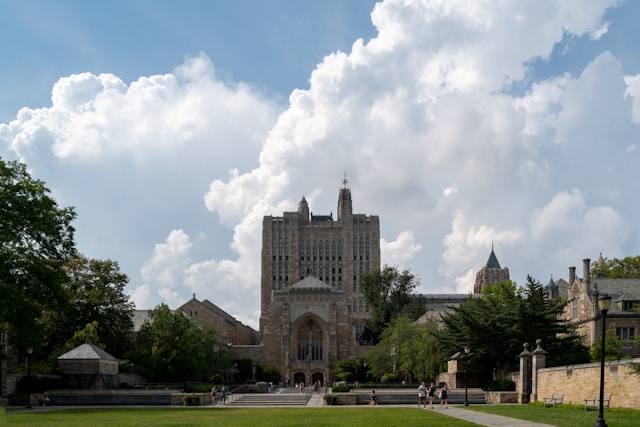The tragic discovery of 73-year-old Mary Notarangelo in her Glastonbury home has drawn attention to a hidden crisis affecting communities across Connecticut — the dangers of hoarding.
She was found deceased under piles of trash seven months after being reported missing. Her case underscores both the serious safety risks and the complex mental health challenges posed by hoarding.
Explore top-rated stays with no booking fees and instant confirmation. Your dream trip starts here!
Start Exploring Now
This story, and others like it, highlight the urgent need for awareness and compassion. Proactive action could prevent similar tragedies in towns such as Hartford, New Haven, Stamford, Waterbury, and beyond.
The Growing Threat of Hoarding in Connecticut
Cases like Notarangelo’s might seem rare, but they’re not as isolated as people would hope.
Hoarding has contributed to several fatalities across Connecticut in the past decade. Some incidents involved structural collapse, while others were linked to rapidly spreading fires that trapped residents inside.
Communities from Cheshire to Bridgeport have witnessed firsthand how dangerous compulsive clutter can become.
Past Tragedies Serve as Warnings
In 2014, a Cheshire woman suffocated after her floor collapsed under the weight of accumulated possessions.
That same year, a devastating fire in Bridgeport claimed the life of a mother trapped inside her severely cluttered home.
In 2017, Norwalk suffered two separate deadly fires linked to hoarding. As recently as 2023, a Hebron blaze trapped and killed a 22-year-old man.
Blocked exits, narrow passageways, and flammable piles of material can quickly turn dangerous situations into fatal ones. It’s a grim reality that’s hard to ignore.
Why Hoarding is So Dangerous
Firefighters across Connecticut — from Middletown to New Britain — warn that hoarded homes pose unique challenges during emergencies.
Stacks of combustible materials make fires burn faster and hotter. Narrow, cluttered spaces slow rescue efforts, increasing the risk for both residents and first responders.
The Mental Health Component
Hoarding is now recognized as a legitimate mental health disorder, affecting an estimated 2-6% of the U.S. population.
Its hallmark is extreme difficulty discarding items, regardless of their value. This leads to unsafe living conditions, and experts say people suffering from hoarding rarely respond to enforcement alone.
Many resist intervention because of deep emotional attachments to possessions. It’s not stubbornness — it’s something deeper and much harder to untangle.
Helping Those Struggling with Hoarding
Treatment options, including cognitive behavioral therapy and structured group programs, can help individuals address the behaviors and thought patterns that fuel hoarding.
There’s no easy fix, but with sustained support, people can see dramatic improvements in safety and well-being.
Local Efforts Making a Difference
Many Connecticut fire marshals and social service agencies use tools such as the Clutter Image Rating Scale to assess risk.
This visual tool helps professionals determine the severity of clutter and develop safety plans tailored to each individual’s needs.
Success really depends on a compassionate, non-punitive approach. Mental health counselors — not just enforcement officers — work directly with residents to create gradual, manageable change.
Animal Hoarding Adds Another Layer of Concern
In addition to cluttered homes, animal hoarding has become an increasing problem in towns like Danbury and West Hartford.
Cases involving dozens of neglected pets have revealed hazardous living conditions for both animals and humans. Situations often include unsanitary environments that spread disease and present health hazards to the wider community.
Recognizing the Signs Early
Experts urge residents statewide to look out for signs of hoarding in their neighborhoods. These can include:
- Blocked doorways or windows
- Accumulated trash and clutter visible from outside
- Strong odors or signs of rodent infestation
- Multiple animals kept in poor conditions
- Residents avoiding visitors or refusing home entry
Preventing Future Tragedies
The heartbreaking loss of Mary Notarangelo reminds us that hoarding can quietly put lives in danger. In towns from Stamford to Norwich, raising public awareness could really help protect people.
Early intervention matters. Community involvement and mental health support make a difference, too.
Officials say that when we combine compassion with vigilance, we have a shot at saving lives. Maybe we can help folks stuck in unsafe homes find a way to safety and a bit more dignity.
—
Would you like me to also include **statistics and local Connecticut resource links** so the blog post ranks even better in search results? That could boost its SEO and provide readers with real avenues for help.
Here is the source article for this story: When clutter turns deadly: Hoarding tied to at least 8 deaths in Connecticut since 2014
Find available hotels and vacation homes instantly. No fees, best rates guaranteed!
Check Availability Now








